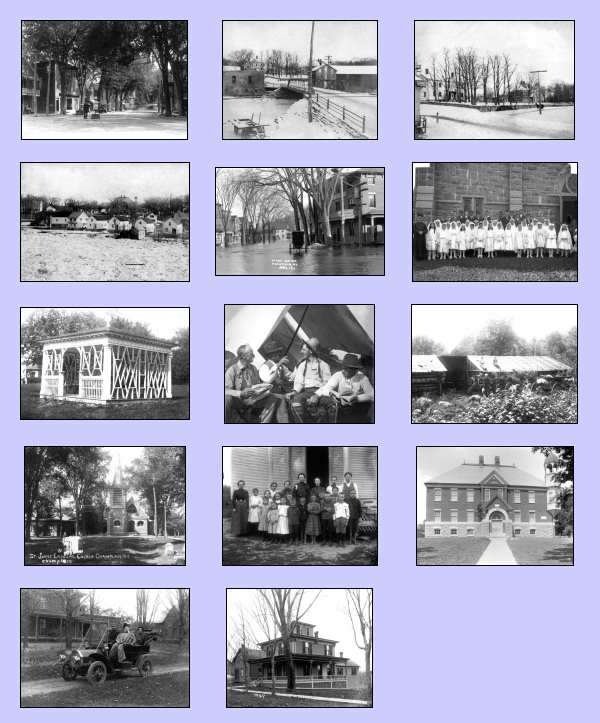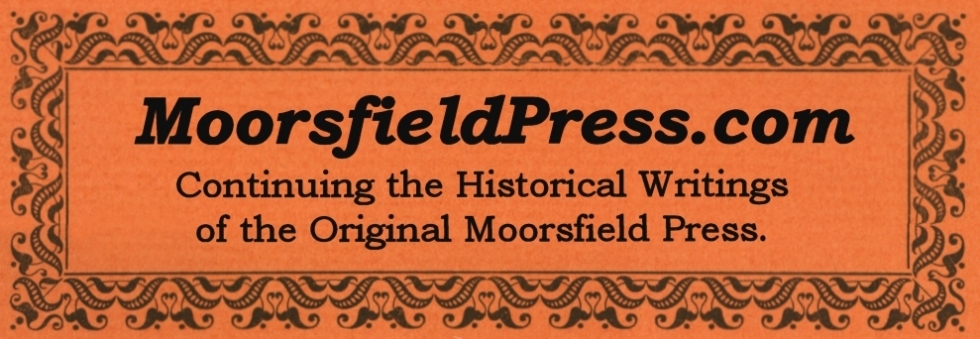2006 Champlain Historic
Calendar
The Village of Champlain in the War of 1812
The Village of Champlain
has a rich history related to the War of 1812.
Most village residents are probably unaware of Champlain's role in the
war or the many battles that were fought near i
Although Champlain did not see much fighting or destruction of property, it served as the first step in the invasion of the United States from Canada within the Champlain Valley. On four occasions, American armies of three to five thousand troops were camped in the village. The British army of ten to fourteen thousand soldiers also camped in the village on their way to the Battle of Plattsburgh.
The Start of the War of 1812
On June 18, 1812, Congress declared war with England after several years of building tensions. Nine days later, General Benjamin Mooers of Plattsburgh received word of the declaration and assumed command of the New York militia in Clinton, Essex and Franklin counties. The militia was sent to several border towns including Chateaugay, Champlain, Chazy and Mooers. The role of the state militia was to defend the border. At this time, the United States Army was not in a position to perform raids into Canada.
No barracks or blockhouses existed in Champlain at the start of the war. This made the leading citizens of Champlain uneasy and prompted several of them to form the Champlain Committee of Safety. The leader of the committee, Judge Pliny Moore, recommended to General Bloomfield that two or three blockhouses be built to house the troops during winter and protect Champlain from Indian incursions across the border. The blockhouses were built on the edge of the village at an unknown location.
November of 1812 – Dearborn’s Occupation of Champlain
On November 19, 1812, Major General Henry Dearborn assumed command of the Northern Army at Pliny Moore’s house in Champlain. Dearborn's plan was to invade Canada through Champlain and attack Montreal. His army consisted of 3,000 regulars and 2,000 militia for a total force of 5,000 soldiers. For comparison, the British only had about 3,000 men stationed between Champlain and Montreal. Dearborn and his officers stayed in Pliny’s house and used it as their headquarters. The soldiers camped in Pliny’s orchards off of Prospect Street (today the farm of Allen Racine). In a letter written to fur trader John Jacob Astor on March 26, 1813, Pliny apologized for not writing him earlier and stated the reason for not writing was because of his unexpected guests: “When Mr. La Herbert went from here last Nov’r my House was like a large Hotell all the principal Officers of the Army were in it & I did not write…”
On November 20, 1812, 600 advance guard troops under the command of Colonel Zebulon Pike marched to Lacolle Mill in the early morning and surrounded a blockhouse but a group of American militia came around from the other side and engaged in a fight with their comrades. This resulted in a total state of confusion as both armies were firing on each other. After the failed attack, Dearborn's advance guard retreated back to Champlain leaving between two and five soldiers dead and several wounded.
The Winter of 1813
Early in
1813, there was a belief that the British would engage the Americans on
Lake Ontario
in western New York. General Dearborn commanded that all of the
regulars at Burlington and Plattsburgh as well as a corps of soldiers
in
Champlain be moved west. This left the
Champlain border mostly undefended and many of the inhabitants believed
that British
raids would now occur unchallenged. Pliny
Moore noted that Champlain's relative safety was because of its
insignificance.
He wrote: “The troops at Plattsburgh except invalids are all gone
to Sackets
Harbour Those at Burlington all but
the 11th Regm’t — a Guard from which of about 80 men at this place
& some
at Swanton — The war at present appears to be removed from this
quarter
our safety consists in our insignificance.”
:
:
- May of 1813 — Herrick's Occupation of Champlain
- June of 1813 — Davis’ Occupation of Champlain
- August of 1813 – Murray’s Raid
- September of 1813 – Hampton’s Raid into Odelltown, Quebec
- October of 1813 – Major Perreault’s Threat to Champlain’s Residents
- November of 1813 – Perreault’s Pillage of Champlain
- March of 1814 – Wilkinson’s Occupation of Champlain
- June of 1814 – Forsyth’s Raid into Odelltown
- July and August of 1814 – Izard’s Occupation of Champlain
- August of 1814 – The British Occupation of Champlain
- Dewey’s Tavern and its Role in the War of 1812

Images courtesy Special Collections Library, Plattsburgh State University College or the author.

